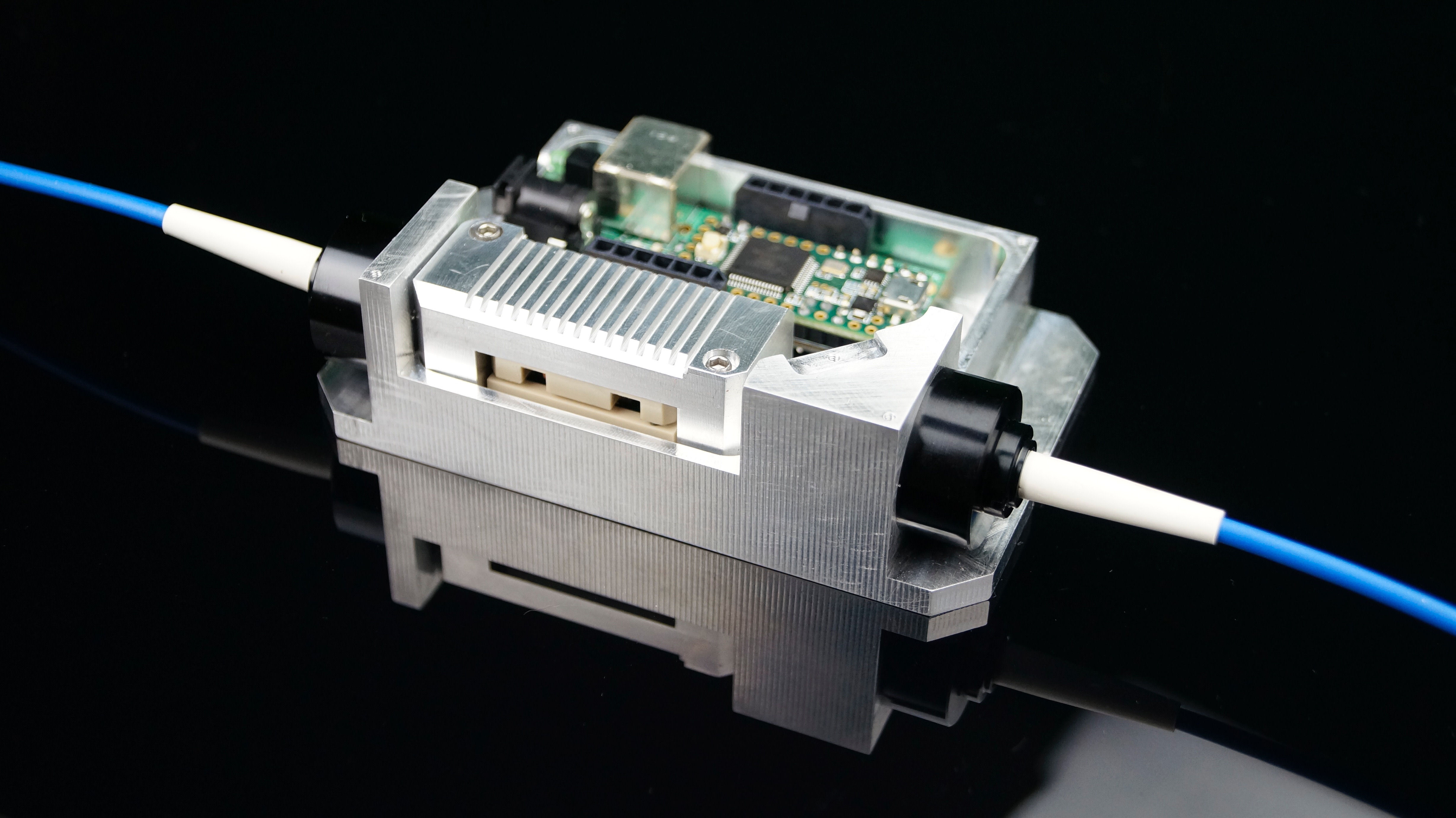Qubitekk licenses ORNL single-photon source approach for quantum encryption

Company hopes to increase quantum encryption data rates ten-fold or maintain current data rates over much longer transmission distances
Qubitekk, a San Diego-based quantum technology company, has non-exclusively licensed an Oak Ridge National Laboratory-developed method to produce photons in a controlled, deterministic manner.
"The idea of a nearly on-demand, single-photon source can be used to increase the speed, or data rates, and the distance you can send the quantum keys when transmitting encrypted information," said Duncan Earl, president and chief technology officer of Qubitekk. "The ORNL technology could address both of those issues, which could move our product closer to commercialisation."
Current encryption techniques rely on complex mathematical algorithms to code information that is decipherable only to the recipient who knows the encryption key. Cyber threats in the energy environment are growing in frequency, scale and sophistication. Scientists, including a team at the Department of Energy's ORNL, are leveraging the quantum properties of photons to enable novel cryptographic technologies that can better protect critical network infrastructures.
Quantum information researchers have long recognised that photons are versatile for quantum computing or protecting sensitive information. However, systems that emit single photons typically do so at random times, and it is difficult to generate them as needed, or deterministically.
The ORNL team turned to a method known as down-conversion, which yields two photons."The occurrence of paired photons is random and unpredictable," said ORNL co-inventor Warren Grice. "But, it's that randomness that we wanted to harness and use to our advantage." This is accomplished by detecting one of the photons to signal the presence of the other.
"The trick then is to direct the heralded photon using a combination of high speed and low-loss operations, so that it appears when needed," Grice added.
To keep from losing the photon pairs, the team built upon existing ideas of multiplexing, an approach that uses a series of light source systems comprising components common in fibre-optics. The ORNL system switches the speed and frequency of the heralded photon. This innovation carries out the switching in the frequency domain that potentially reduces single-photon loss.
"The goal is to specify and control every aspect of the photon's quantum state, constraining everything to a single mode so that the photons emitted from the single-photon source are identical"”each one indistinguishable from the next," ORNL co-inventor Nicholas Peters said.
The identical photon pairs can be used in developing quantum key encryption technologies that protect information from cyber threats when shared over existing machine-to-machine networks.
Qubitekk plans to enhance the company's existing quantum information prototype through integrating the basic design with ORNL's concept, which could either increase quantum encryption data rates ten-fold or maintain current data rates over much longer transmission distances.
Operational networks used to control power grid operations will be strengthened by the ORNL-developed technology, which uses the fundamental principles of quantum physics to reveal, in real-time, the presence of an adversary attempting to intercept the exchange of secret keys used in cryptographic algorithms that protect energy sector information being communicated between legitimate parties. This advances the energy sector's vision of resilient energy delivery systems that can survive a cyber incident.
The inventors of the deterministic single-photon source concept are Joseph Lukens, Nicholas Peters and Warren Grice of ORNL's Computational Sciences and Engineering Division. For more than a decade, they have experimented with ways to emit and fine-tune the production of single photons, with the goal of advancing quantum information applications including computing, communication and sensing.
Earl expects Qubitekk to further develop the single-photon source design at the company's facility and plans to advance to field trials with their existing customers including California-based utility companies. ORNL will provide additional support as needed. Earl is a former ORNL researcher who worked with the lab's Cyber Warfare group and the Quantum Information Sciences team.
This project was funded by DOE's Office of Electricity Delivery and Energy Reliability's Cybersecurity for Energy Delivery Systems (CEDS) program and ORNL's Laboratory Directed Research and Development program. Further information regarding this research, and other projects supported by the CEDS programe.
UT-Battelle manages ORNL for DOE's Office of Science.
































